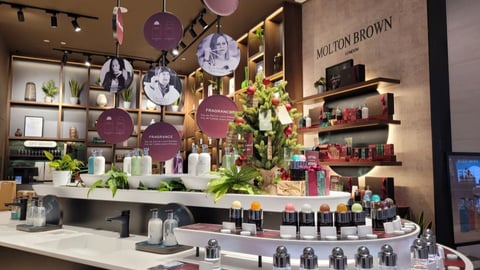A New Standard: CPGs Extending Past Retail Media Networks
The retail media sector changed at an incredible rate over the last year and a half. It’s forced CPG brands to reconsider how they interact with their existing and desired consumers, work with retailers, and subsequently the importance of retail media networks in their overall advertising strategies.
Although the rise of retail media networks provide benefits by offering in-store shelf space, e-commerce preferences for strategic placements in a retailer’s website or apps, and first-party data, there are some important reasons not to allocate all consumer engagement spend there. It’s becoming clear that digital marketing efforts outside retail media networks need to be considered, and consumer goods brands should incorporate complementary strategies to maximize results.
Realizing Limitations
In lock-step with the rise of digital advertising, retailers successfully innovated their monetization capabilities by creating new options for promoting goods on their owned channels. As the capabilities extended outside of in-store advertising, it paved the way for unique first-party data stemming from loyalty programs, past or recurring purchases, and more.
With first-party data, retailers claim to better identify relevant audiences on behalf of CPGs and offer fresh insights into consumers’ needs. While it is true that these customer audiences are hyper-relevant, they are also fairly small in regards to scale. Think about it: A given retailer’s first-party data captures only those patrons who have essentially opted-in to the businesses rewards or incentive programs.
[See also: CGT 2021 CMO of the Year Award Winners]
As loyalty program numbers emerge, it’s apparent that even the largest retailers struggle in regards to scale. For example, Walmart+ loyalty program members make up only 13%-14% of total Walmart.com shoppers. We can see that many consumers aren’t enrolled in loyalty programs with every retailer they frequent, demonstrating the minimal reach and lack of first-party data actually available. This all boils down to missed targeting opportunities.
Another point to consider is the fact that consumer insights vary from one retailer to another — and it isn't common or simple to weave together insights from different retail media networks. The types of consumers who buy products from Albertsons, Whole Foods, Walmart and Walgreens could be vastly different from one another, or quite similar.
However, the inability to interact with consumers across the internet, as well as via a retailer’s owned channels, makes it difficult to actually understand a given consumer. The broader digital advertising industry speaks volumes about the need and ability to form mutually beneficial relationships with consumers, yet limited scale and tracking information makes this an uphill battle.
This scale limitation also creates issues when trying to personalize messaging in a way that optimizes a campaign’s results. For example, consumers in New York City this summer could benefit from messages that promote outdoor and group setting situations, while consumers in LA would benefit greater from in-home goods or scenes, as the COVID cases in the area are rising.
CPG marketers need to consider these factors and incorporate a broader, more unified set of tools to better engage audiences. It’s not that retail media networks are ineffective — they do provide audiences and insights into a vital part of the consumer journey — but putting all your eggs in one basket leaves a lot on the table.
Convergence of Tactics
With this in mind, the digital ad spend in the U.S. retail marketing sector to increase by 25.7% in 2021. It’s critical CPG brands and marketers diversify their approach to fully take advantage of consumers’ adherence to digital. They need to strategically utilize both retail media networks and platforms that reach consumers outside those networks’ scope.
The main goal for marketers should be to engage the most relevant and interested consumers across channels and platforms — and the way to actualize this is to weave together disparate marketing tactics including national media, consumer engagement, e-commerce marketing, digital-out-of-home and mobile.
[See also: Tech-Driven Revenue Planning in an Omnichannel World]
For example, Walmart could place ads for a given CPG brand on its website. From there, Walmart could identify relevant loyalty consumers and utilize first-party data to reach them outside their owned digital channels, across the open web and mobile devices.
To add continued effort, Walmart could then incorporate out-of-home messages on billboards or displays near key store locations that continue targeting relevant consumers for the CPG brand. Taking things a step further — the retailer could layer in mobile location data from vendor partner. That helps them engage relevant consumers at the household level, enabling them to run relevant ads on mobile and CTV at scale.
CPG brands and retail marketers are at the evolving whim of consumer tastes and preferences. As the world continues on its path to recovery and stability, the industry needs to find comfort in flexibility and new forms of audience interactions. By utilizing several key digital advertising tactics and meeting consumers where they’re most comfortable, CPG brands can better understand growing trends, and develop personalized messaging that drives results.
Ken Harlan is founder/CEO of MobileFuse.




